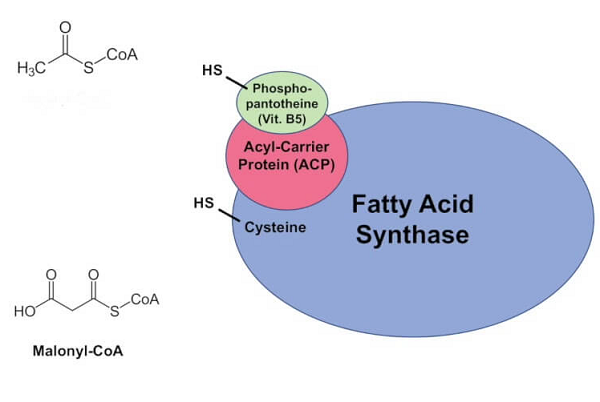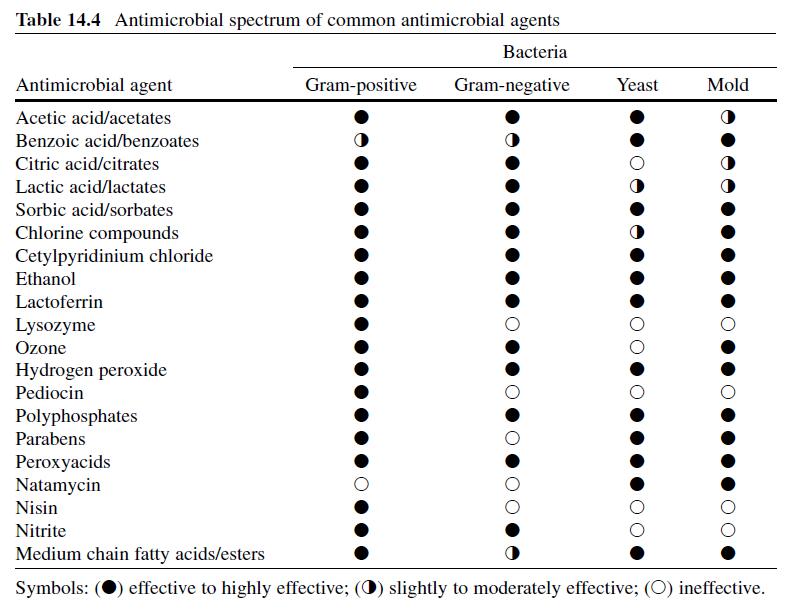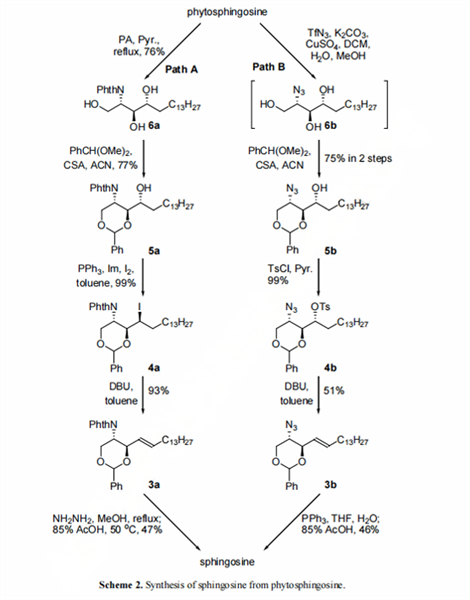How can fatty acids be synthesized?
Biological synthesis
Synthesis of fatty acids involves adding two-carbon units to a growing chain. Initially, fatty acid synthase contains an acetyl group (#1). Acetyl-CoA carboxylase catalyzes the ATP-dependent synthesis of malonyl-CoA, which is transferred to fatty acid synthase (#2). At this point, an acetyl group resides at one site of the enzyme, bound to a sulfhydryl group, whereas a malonyl group resides at a second site of the enzyme, also bound to a sulfhydryl group. In moving from Step 2 to Step 3, the acyl group at the first sulfhydryl group attacks the malonyl group. The attack occurs at the central carbon of the malonyl group. This results in the discharge of CO2 and elongation of the growing fatty acid chain by two carbons. At this point, the chain is four carbons long.

The next few steps involve the reduction of the four-carbon chain. The process takes the form of a reduction step, a dehydration step, and another reduction step (#3-#6). The reduced chain is transferred to the first sulfhydryl group (#6, #7). Finally, another malonyl group is transferred to the enzyme (#7, #8). The malonyl group is transferred to the second sulfhydryl group. Transfer of the four-carbon unit residing at the first sulfhydryl group to the malonyl group generates a six-carbon unit. The process is continued until a long-chain fatty acid is formed.
The final step in fatty acid synthesis is the discharge of the fatty acid from the sulfhydryl group of fatty acid synthase. This discharge involves the attack of a molecule of coenzyme A, resulting in the release of the fatty acid as fatty acyl-CoA.
In plants
The synthesis of fatty acids in plants occurs exclusively in the plastids and proceeds in a series of cyclic reactions, starting with converting acetyl-CoA to malonyl-CoA. Two carbon atoms from the acetate moiety are condensed with malonyl-ACP and, again, at each successive condensation step in the cycle. The growing fatty acid chain is tethered to an acyl carrier protein (ACP), which provides aqueous solubility. The cycle continues until the chain is 16 or 18C long. Some 16:0-ACP is released from the fatty acid synthesis machinery, but most are elongated to 18:0-ACP and are converted to 18:1-ACP by a specific desaturase. Thus, 16:0 and 18:1 are the primary products of fatty acid synthesis in plastids. Enzymes involved in the synthesis, some seven enzymes, catalyze individual steps and occur as a complex, referred to as fatty acid synthase, in the stroma of the plastid. This mode of fatty acid synthesis differs from that in animals and fungi, where the reactions are catalyzed by multifunctional enzyme complexes resident in the cytosol.



